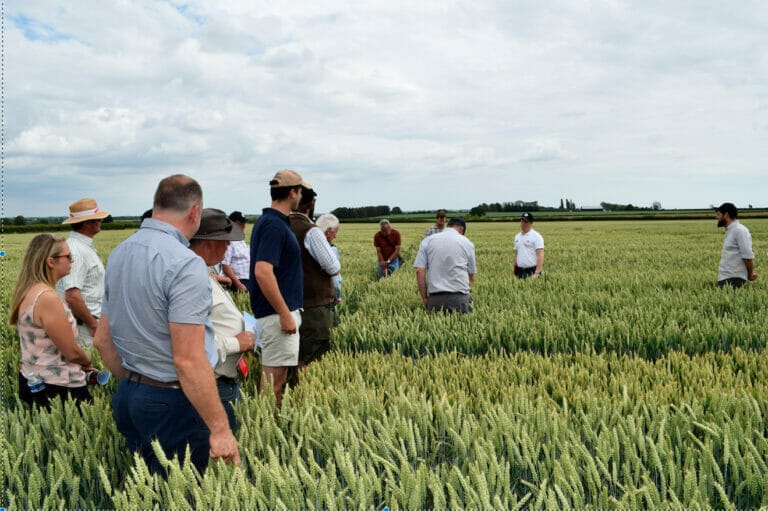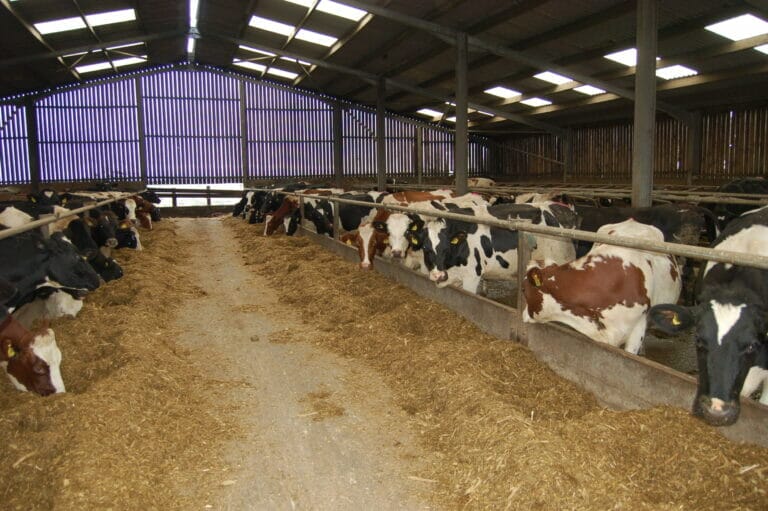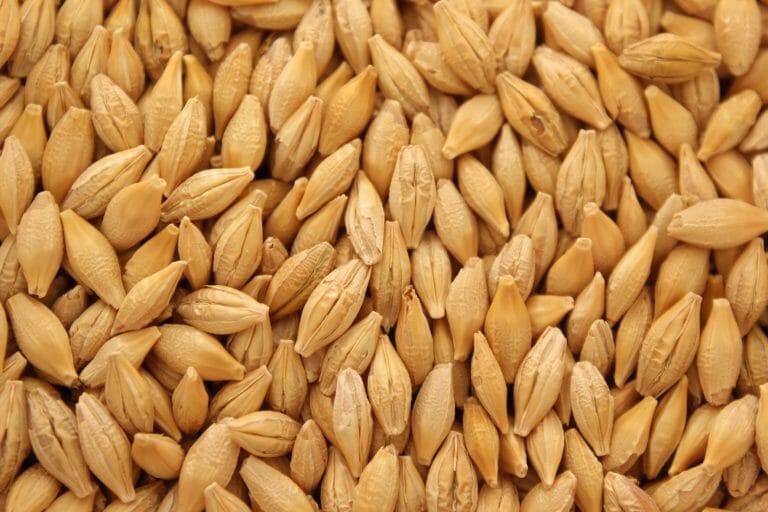
Growers in Essex recently got the opportunity to evaluate a host of new and established wheat varieties, when Limagrain UK opened the doors to one of its network of farm trial sites.
The winter wheat variety demonstration, hosted by JD & DJ Golding at Tolleshunt D’Arcy near Maldon, features treated and untreated plots of more than 30 varieties from Limagrain and other breeders, including established names from the AHDB Recommended List, alongside several exciting potential new additions.
It was the first time in six years that Limagrain had used the site, with emphasis on engaging with growers and agronomists, giving them a chance to see how varieties perform in the soil type, climate and growing conditions of the area, and in a “real-world” farm situation.

Crusoe Winter Wheat
As host farmer Tim Golding explained, the trials had been deliberately managed to be more representative of typical farm inputs, and fungicide treated plots had received much of the same inputs as commercial crops on the rest of the farm. This year, Mr Golding was growing 40 ha of the Group 1 milling wheat Crusoe, alongside the hard Group 4’s Gleam, RGT Skyfall and KWS Extase, in a rotation that included grass seed, oilseed rape and borage as the main cereal break crops.
“We love having the varietal trials on our farm, as we get really useful results, often enabling us to see how new varieties perform on our soils and in weather conditions, even before they are commercially available.”
Growers attending the event also recognised the value of being able to evaluate how different varieties performed in local conditions, rather than having to rely on data based on trials conducted elsewhere in the country, where soils, disease pressure and climate were often very different.
Indeed, this part of the Essex coast is one of the driest places in the country, which presents many challenges for growers, especially in seasons like 2022 when rainfall has been well below average.
Quality wheats
Limagrain’s Tom Barker said the climate created opportunities too, and the heavier bodied soils combined with high levels of sunlight and proximity to end users made the South East a good location for growing higher protein Group 1 and 2 milling wheats, such as Crusoe.
“Crusoe is now 12 years old, but it’s still rated 9 for yellow rust and has a good rating for Septoria, and reliably delivers good specific weight, Hagberg and protein, which is why it remains a firm favourite among the millers.”
He acknowledged it had been several years since the last new addition to the Group 1 sector, but insisted breeders were working hard to bring new varieties to market.
Two coded Limagrain UK varieties currently in National List 2 trials were on show at the Essex site, with both offering milling potential. “They’ve got KWS Extase type yield, but with better quality.”
There were some potential future LG early generation material for the Group 2 sector as well, including a new white wheat with Crusoe parentage, that if successful could allow millers to produce a white wholemeal loaf.
“White wheat has historically been a bit of a niche market, that’s been difficult for breeders to develop reliable varieties for. However, our potential new variety looks to be the best white wheat we’ve ever produced, has a much more stable Hagberg and is good on yellow rust and Septoria.”
Given the changing UK climate, Mr Barker said Limagrain was also looking to see whether continental varieties offered potential benefits. A German wheat being trialled in Essex looked to have merit, although more would be known about its suitability after this harvest, once grain quality and milling assessments had been done.

New varieties drive yield
At the other end of the Recommended List, there were several exciting new Group 4 Limagrain varieties being trialled, which included RL Candidate LG Redwald and National List 2 coded varieties.
“LG Redwald is a huge biomass variety, that’s quite tall and very high yielding at 106%, with decent disease scores and Orange Wheat Blossom Midge (OWBM) resistance. Its large tillering capacity means it covers the ground really well, and could be sown at lower seed rates with minimal difference to yield.”
Mr Barker said OWBM resistance was a particularly important trait for growers in the South East, especially as insecticide use declined, and was something that Limagrain UK had successfully bred into many of its varieties through the use of genetic markers. Barley Yellow Dwarf Virus (BYDV) resistance was another trait the firm was bringing into its breeding programme for future varieties, he added.
“There’s never been a more important time for growers to evaluate what they are doing on-farm, and variety choice is a key part of that, he concluded. Visiting local trials offers a great opportunity to see how varieties might perform on your own farm in future seasons.”
































